On May 12, 2025, the Alberta government announced the freezing of the industrial carbon pricing system, known as the TIER program, at the current rate of $95 per tonne of carbon dioxide equivalent (CO2E). According to the Alberta government, the freeze was enacted in response to the current tariffs imposed by the United States on Canada’s energy sector. It is designed to provide certainty, stability, and economic relief to oil and gas, electricity, and other large industry sectors. Prior to the freeze, the TIER program rate was set to rise by $15 per year, reaching $170 per CO2E by 2030.
The federal government recently lifted the federal carbon tax. After March 31, 2025, consumers will no longer be charged for natural gas usage (the charge will be set to 0). The federal government stated that the focus of pollution pricing will shift to large emitters via the Output-Based Pricing System (OBPS).
What is the TIER program?
Since 2007, the TIER program has been the carbon pricing system for large industrial consumers in Alberta. Regulated facilities in the TIER system are charged a set industrial price for CO2E produced. The program is designed to reduce emission levels generated from industrial facilities, while the collected funds are used to develop technologies such as geothermal, hydrogen, energy storage, methane emissions reduction, and carbon capture.
How does the TIER program work?
TIER regulated facilities include those that emitted 100,000 tonnes CO2E or more of carbon dioxide equivalent per year in 2016 or any subsequent year, or those that import more than 10,000 tonnes of hydrogen annually. Facilities with emissions less than 100,000 tonnes CO2E may opt in to the regulation if the facility competes directly with another regulated facility, emits 2,000 tonnes CO2E or more, and belongs to an emissions-intensive, trade-exposed sector.
Emissions reduction obligations are determined according to a facility-specific benchmark approach and high performance benchmark approach. In most cases, a regulated facility is subject to the less stringent of the two.
Under the facility-specific benchmark, a facility is required to reduce its emissions intensity relative to its historical production. The high-performance benchmark is based on the average emissions intensity of the most emissions-efficient facilities producing each benchmarked product over reference years. If there are fewer than ten facilities producing a product, the benchmark is set based on the emissions intensity of the best-performing facility.
Facilities that exceed their requirements can generate performance credits. Those that do not meet their limit can either purchase offsets or pay into the TIER fund at $95 tonnes/CO2E.
What is the future of the TIER program?
At the time of the announcement, the freezing of the TIER program will last indefinitely. The next legislated review of the TIER system is scheduled to take place by December 31, 2026. The latest version of the TIER regulation came into effect on January 1, 2023.
Saving on industrial electricity and natural gas costs
From emissions-related programs to market changes, many external factors can affect electricity and natural gas costs for industrial energy consumers. Whether to avoid volatility or to get the most out of low market rates, EnergyRates.ca can help large energy consumers review their energy plans and rates. Our experienced team of energy specialists can provide you with custom energy quotes based on your needs, as well as corporate renewable energy solutions, such as RECs, Carbon Offsets, Carbon Accounting, and VPPA information.
Using EnergyRates.ca is easy – all you need to do is fill in the form above to get started.











